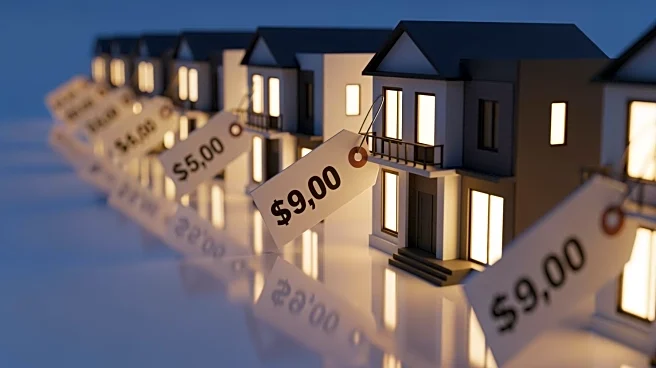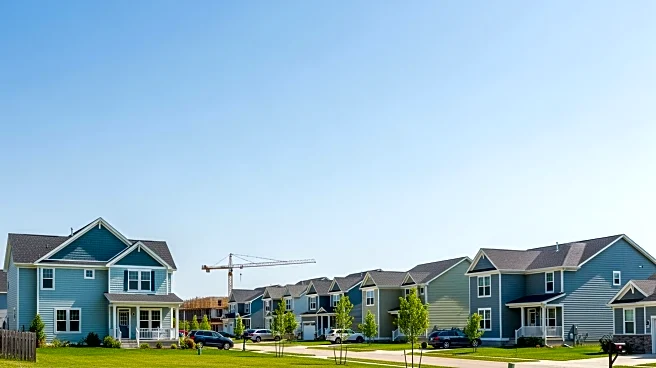What's Happening?
The National Association of Realtors has released a report indicating a significant decline in the number of homes sold to first-time buyers, reaching a record low over the past year. The average age of first-time buyers has increased
to 40, reflecting the challenges faced by younger adults in entering the housing market. High home prices and mortgage rates are contributing to this trend, with existing homeowners holding onto properties longer due to lower mortgage rates, resulting in fewer available homes for new buyers. The report highlights the need for addressing the housing market's inventory shortage, which is preventing young adults from acquiring their first major financial asset.
Why It's Important?
The decline in first-time homebuyer sales has broader implications for the U.S. housing market and economy. As fewer young adults are able to purchase homes, it affects their ability to build wealth and financial stability. This trend could lead to long-term economic consequences, including reduced consumer spending and slower economic growth. The housing market gridlock also impacts the construction industry, as demand for new homes may decrease. Addressing these issues is crucial for ensuring economic mobility and stability for future generations.
What's Next?
Efforts to alleviate the housing market gridlock may involve policy changes aimed at increasing housing inventory and affordability. Stakeholders, including policymakers and real estate professionals, may need to explore solutions such as incentivizing new home construction or revising mortgage lending practices to support first-time buyers. Additionally, economic conditions, such as interest rates and inflation, will continue to influence the housing market dynamics.
Beyond the Headlines
The current housing market situation raises ethical and social questions about access to affordable housing and economic inequality. As homeownership becomes increasingly difficult for younger generations, it may exacerbate existing disparities and limit opportunities for upward mobility. Long-term shifts in housing policy and societal attitudes towards homeownership may be necessary to address these challenges.











